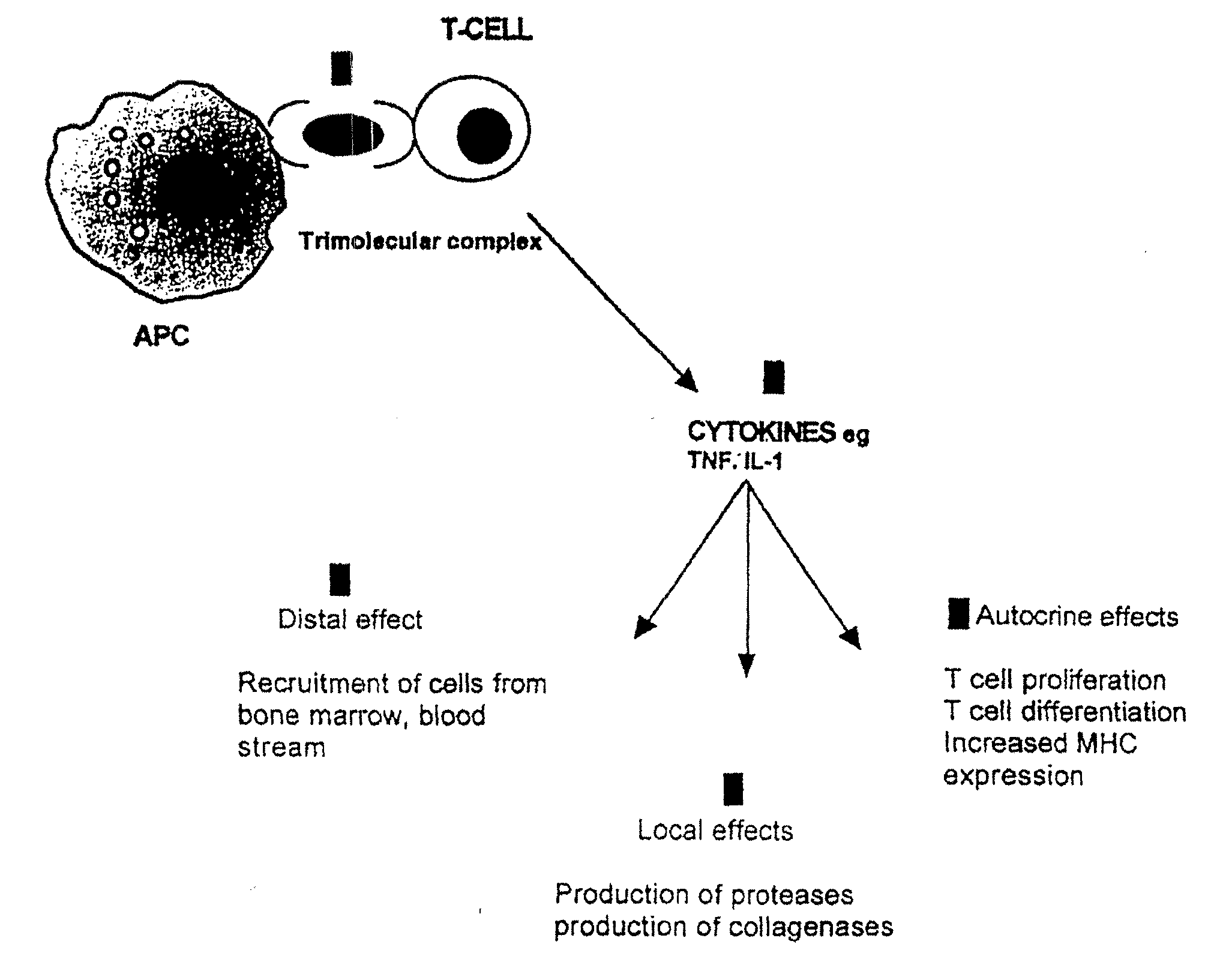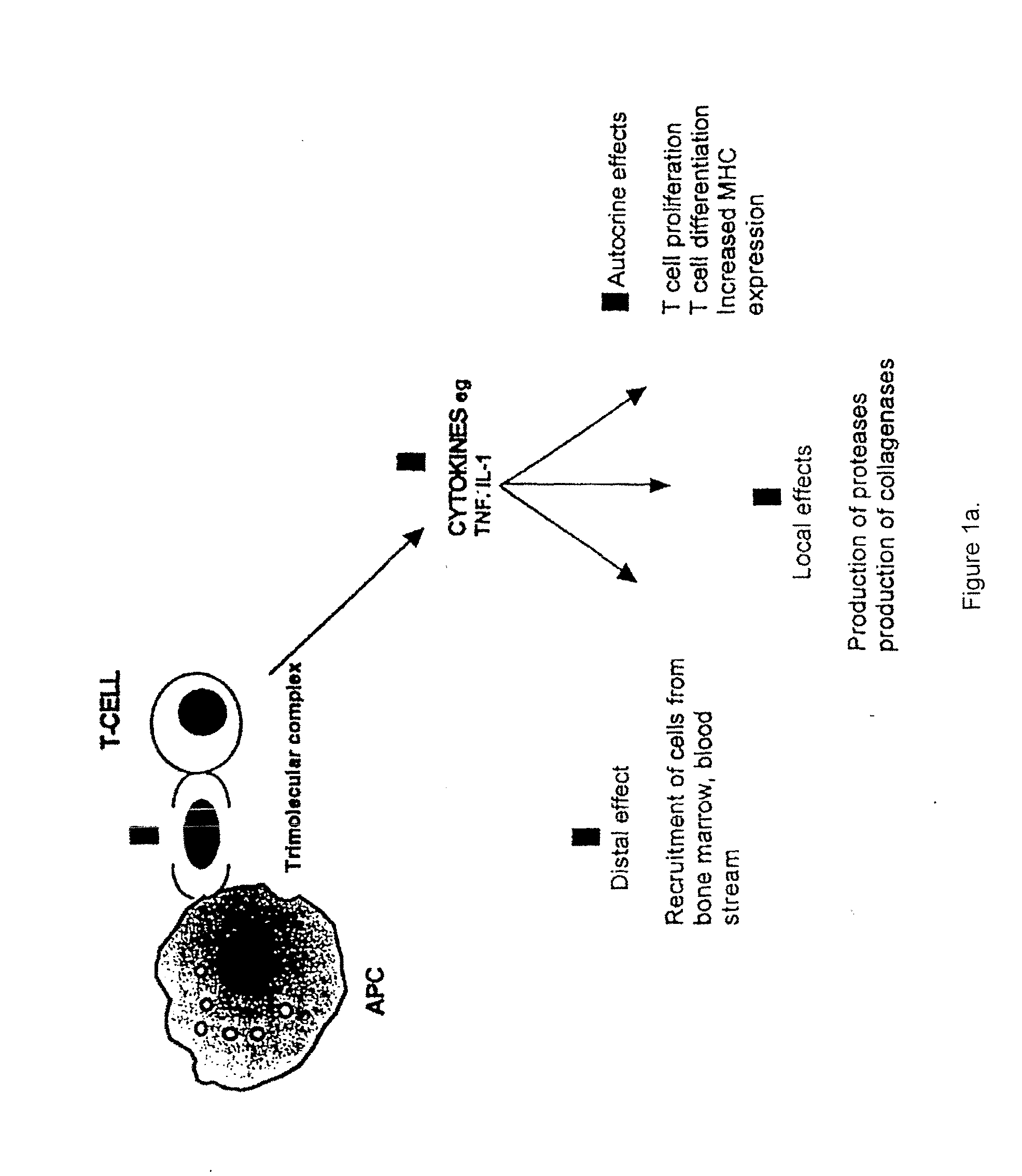T cell antigen receptor peptides
a technology of antigen receptor and peptide, which is applied in the field of peptides, can solve the problems of limiting its use and auto-immune disease, and achieve the effects of increasing potency, prolonging half-life, and decreasing the biological activity of peptides
- Summary
- Abstract
- Description
- Claims
- Application Information
AI Technical Summary
Benefits of technology
Problems solved by technology
Method used
Image
Examples
Embodiment Construction
Experimental Methods for Aspects 1-3 of the Present Invention
[0107]Peptide synthesis. Peptides were synthesised by solid phase synthesis using FMOC chemistry in the manual mode. Unprotected peptides were purchased from Auspep (Melbourne, Australia) with greater than 75% purity as assessed by HPLC. An example of an enclosed specification sheet is attached in the Appendix. The final concentration of peptide dissolved in 0.1% acetic acid used in cell culture ranged from 10 μM-200 μM. For in-vivo studies,
peptides were dissolved / suspended in squalane oil (2-, 6-, 10-, 15-, 19-, 23-hexamethyltetracosane).
[0108]Cells. The following cell lines were used: 2B4.11, a murine T-cell hybridoma that expresses a complete antigen receptor on the cell surface and produces IL-2 following antigen recognition (cytochrome-c); an interleukin-2 dependent T-cell line (CTLL) for conventional biological IL-2 assays; and the B-cell hybridoma cell line LK 35.2 (LK, I-Ek bearing) which acts as the antigen presen...
PUM
| Property | Measurement | Unit |
|---|---|---|
| hydrophobic | aaaaa | aaaaa |
| aspartic acid | aaaaa | aaaaa |
| acid | aaaaa | aaaaa |
Abstract
Description
Claims
Application Information
 Login to View More
Login to View More - R&D
- Intellectual Property
- Life Sciences
- Materials
- Tech Scout
- Unparalleled Data Quality
- Higher Quality Content
- 60% Fewer Hallucinations
Browse by: Latest US Patents, China's latest patents, Technical Efficacy Thesaurus, Application Domain, Technology Topic, Popular Technical Reports.
© 2025 PatSnap. All rights reserved.Legal|Privacy policy|Modern Slavery Act Transparency Statement|Sitemap|About US| Contact US: help@patsnap.com



